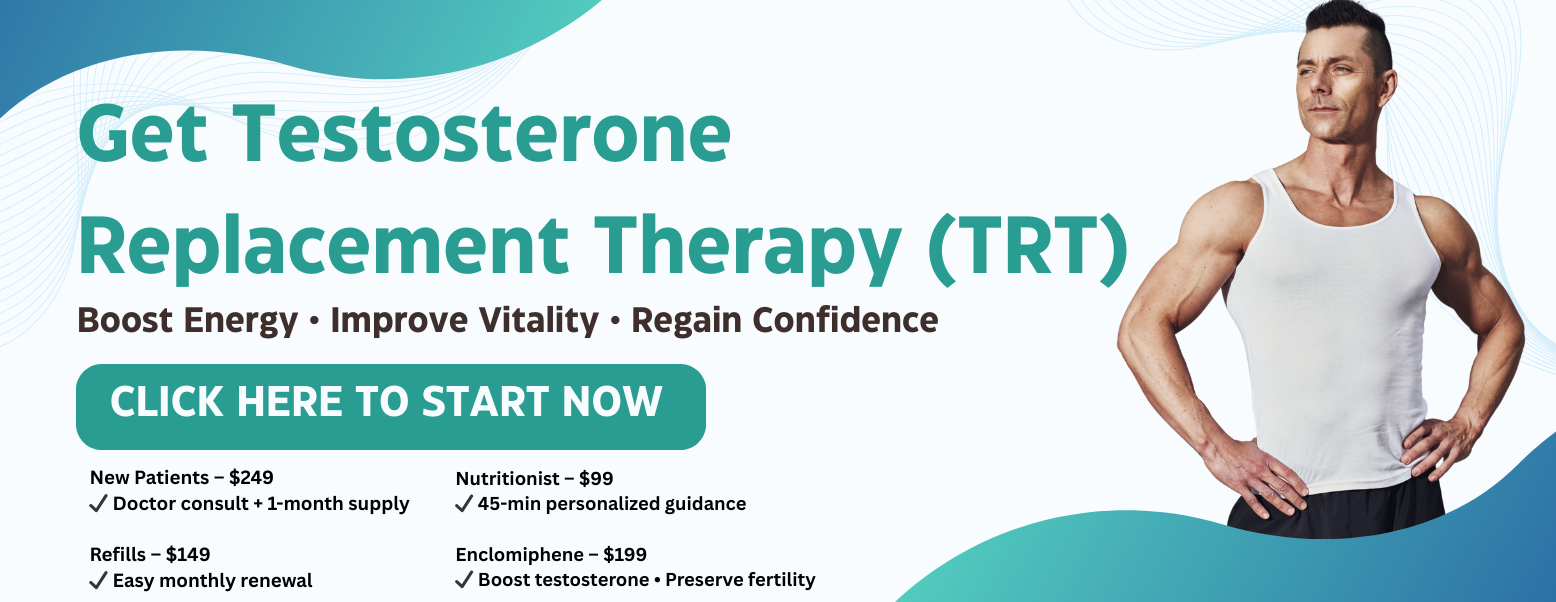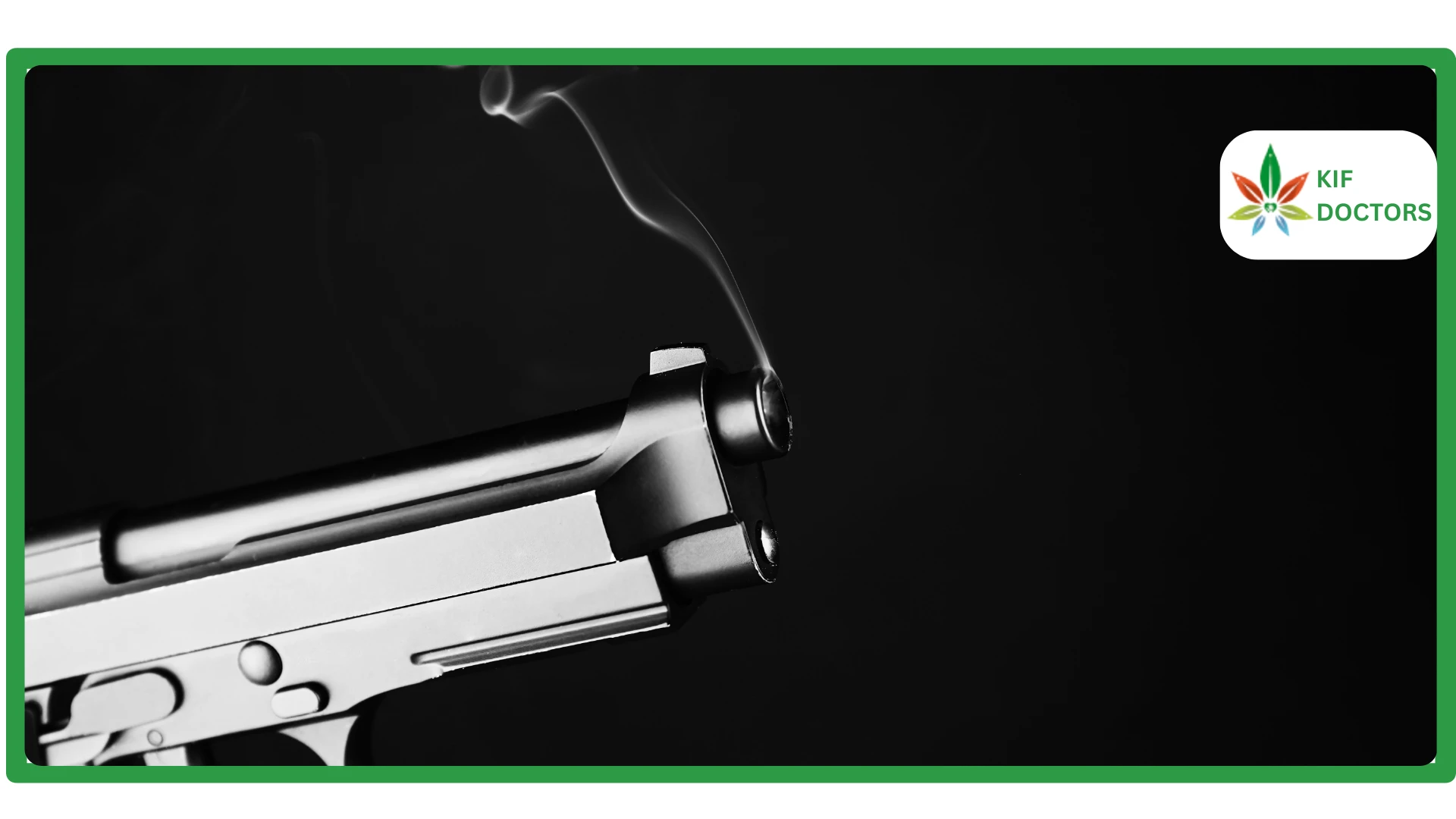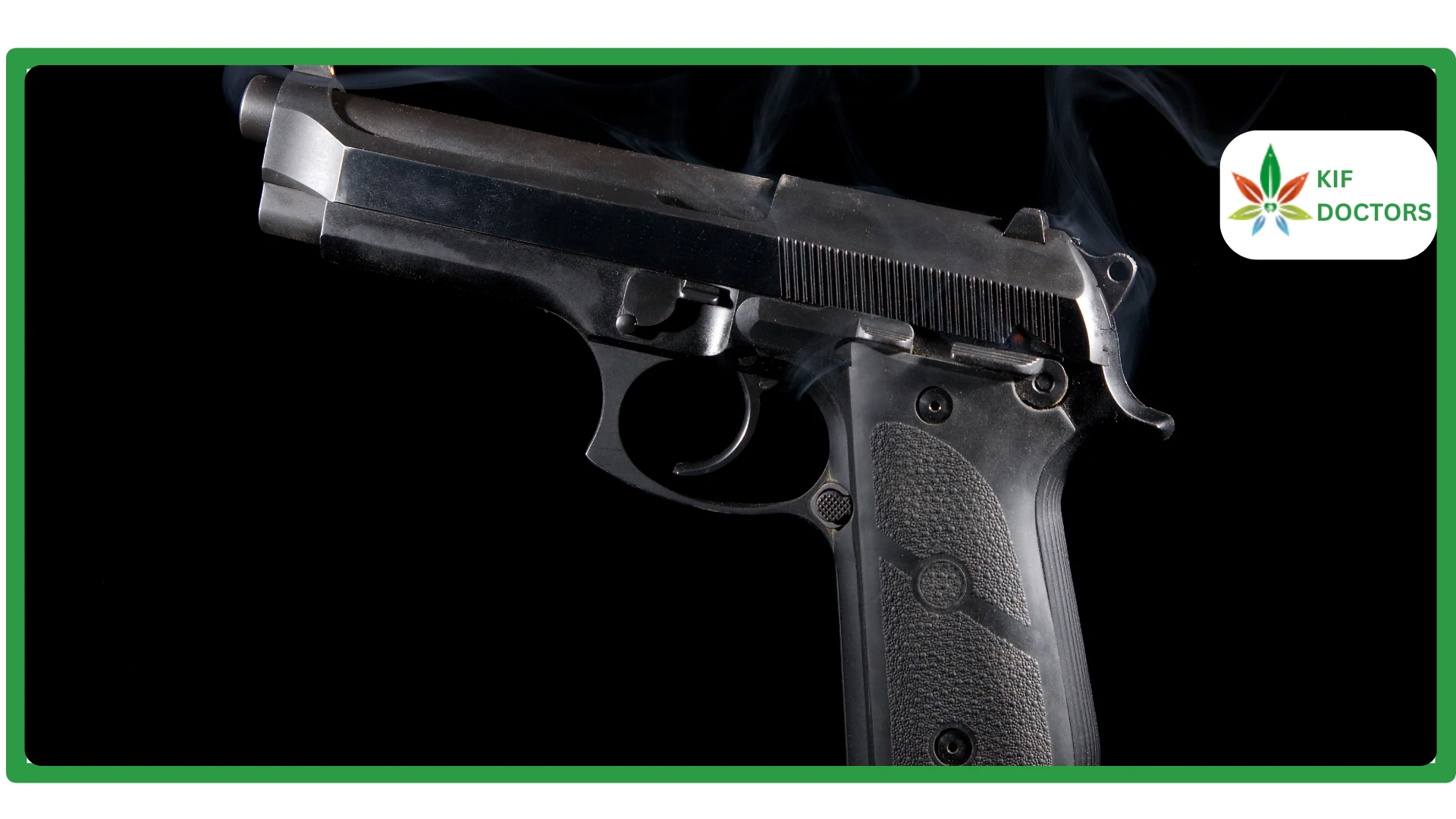Are you having trouble with your joints? For many men, creaky knees, stiff shoulders, and aching hips are not merely physical manifestations of aging-they may indicate a more serious problem. Usually, the root cause of joint pain, decreased mobility, or weakness is, in fact, low testosterone.
In 2025 when more men are searching for interventions to chronic joint pain, Testosterone Replacement Therapy (TRT) has emerged as a plausible treatment option—not only for increasing energy or libido but supporting healthy joint function with better overall physical function.
Don’t Wait, Reclaim Your Vitality – Click here to Book Your TRT Consultation Now!
With TRT allowing for an increase in testosterone levels, men may obtain better muscle support, reduced inflammation, better bone integrity, or increased flexibility. Program characteristics, like those of TheKIF.com, provide a tailored hormone treatment plan that utilizes continuous assessment to ensure that every circumstance improves your long term mobility.
Let’s take a closer look at the ways in which TRT may help your joints, review the literature regarding TRT, and also recognize when would be best to consider TRT.
Joint Pain and Its Causes in Men
Joint pain doesn't just happen overnight, and is probably not just one thing. For men, a the confluence of a reduction in testosterone, habits and lifestyle choices, and age deterioration will all add up to more joint stiffness and soreness.
1. Age-Related Testosterone Decline
Ageing decreases testosterone levels naturally in men, whereas its ever slight drop every year will lodge stricter and stringent muscle wasting, further deterioration of connective tissues, or increasing chance of stress and injury to joints down the pathway.
2. Chronic Inflammation
Lower testosterone levels are associated with higher internal inflammation of the body. Higher concentrations of pro-inflammatory cytokines, including IL-6 and TNF-alpha, are associated with joint degeneration as well as chronic pains; for example, arthritis.
3. Obesity and Sedentary Lifestyle
Having extra weight or being obese increases the load to the joints especially in the knees and spinal discs. If you add in a sedentary lifestyle, you end up with a more sedentary lifestyle nut with tight musculature, reduced circulation, and a deterioration of joint health.
4. Muscle Atrophy
With less testosterone, you will lose muscle mass which gives your joints little support. The result is an imbalance that will increase wear with time.
Role of Testosterone in Joint and Bone Health
When we take into consideration how testosterone helps the body naturally, it may help explain why testosterone replacement therapy (TRT) is beneficial for alleviating joint problems in some men. Here are five ways that testosterone can support the body - and joints specifically:
1. Promotes Muscle Growth for Joint Support
Muscles' role is to absorb the transfer of force from impact loads and weight load from gravitation. Without sufficient muscle mass, there is a higher rate of force being transferred to the joint causing damage.
Testosterone activation of muscle protein synthesis resolves to an increase in muscle proteins and supports muscle mass - replacing lost muscle when circumstances present. Muscle mass can help protect vulnerable joints (ones with previous dislocation, or older individuals with bone issues as an example).
2. Increases Bone Mineral Density
Basically, testosterone is very important to bone density and strength. Low testosterone levels weaken bones which can lead to fractures, and instability of joints (bone fractures can also cause instability in adjacent joints). Hormone replacement therapy restores bone density as well as tensile strength, which can relieve stresses to the joint.
3. Enhances Collagen Production
Collagen is the most abundant protein in the body and provides structural support for tendons, ligaments, and cartilage. Testosterone ultimately results in an increase in collagen synthesis which provides better support and flexibility to joints (increased range of motion), which can promote stabilization.
4. Reduces Inflammatory Cytokines
Maintaining normal testosterone levels may also help regulate the body's inflammatory process and may help decrease joint stiffness and pain from inflammatory joint states. Testosterone may have an indirectly beneficial role in response to cytokines like IL-1β and IL-6 to help suppress unwanted cytokine activity, allowing it to play a lesser role to joint issues.
5. Improves Fat Distribution
Excess visceral fat can result in systemic inflammation. Hormone replacement therapy helps modulate the body fat deposition distribution and bring systemic inflammation down, including reducing load and stress to our weight bearing joints.
How TRT Helps with Joint Pain: Key Benefits
Let’s expand upon the distinctive ways Testosterone Replacement Therapy can help with joint pain and overall mobility.
1. Decreases Joint Inflammation
TRT has some effect on controlling systemic inflammation throughout the body, which is one of the causes of joint pain, by normalizing hormone levels. This is especially helpful for men with metabolic problems or beginning arthritis.
2. Strengthens Surrounding Muscles
TRT promotes muscle growth and recovery. Larger muscles like quadriceps, hamstrings and glutes remain strong and healthy which helps to decrease the load on those major joints.
3. Supports Cartilage Regeneration
There is only a certain degree of how well cartilage can regenerate. However, testosterone contributes to synthesizing joint lubrication and collagen. Therefore, as degeneration slows, pain and a pathway towards regeneration comes with it.
4. Improves Posture and Joint Alignment
Testosterone helps build muscle evenly throughout the body resulting in better alignment and posture. When we are more aligned, we reduce excessive pressure on already vulnerable joints, and can reduce the strain from compensation.
5. Enhances Physical Activity and Recovery
Men tend to have increased activity levels when going through TRT, in conjunction with faster recovery times. They also tend to lose weight more quickly. Consequently more activity means more rotation in the joints, securing a pathway toward increased mobility.
When Joint Pain Might Not Be Hormonal?
TRT may be an effective treatment strategy for a joint pain issue with a hormonal basis, but it's not the key to everything. Sometimes, testosterone therapy is not going to help, and it is essential to know when to think of other treatment options.
1. Degenerative Joint Diseases (e.g., Osteoarthritis)
Advanced Osteoarthritis sets in, where joint damage becomes so severe that no amount of hormonal support could go into a positive or restorative direction along with the joint structure. While TRT may help decrease joint tissue inflammation, there is no way that it will help repair the cartilage at that late state of degeneration.
2. Ligament or Tendon Injuries
If you suffer from a traumatic injury (i.e. sports injury, or accident) to a joint structure, such as ligament tears, or tendonitis, then you will require specialized treatment, including rehab and/or surgery. It is true that TRT may accelerate your recovery, but it will not heal those injuries all by itself.
3. Autoimmune Disorders Like Rheumatoid Arthritis
For individuals whose joint pain originates from an autoimmune attack on their joint structures, you can assume that your testosterone levels are normal and TRT will not fix this either. There are other specialized treatments required for this possibility.
4. Gout or Infection-Driven Pain
For individuals with swelling and pain in their joints from gout or septic arthritis, this is strictly a problem of inflammation driven from the excessive uric acid levels and it has nothing to do with testosterone levels. This is a serious medical condition which will require some other distinct type of care.
5. Referred Pain from Nerve Compression
For individuals who have pain that is occurring in the joint area, such as pain from a compressed nerve, or a herniated disc, and that pain appears to be joint pain, then neither inflammation, or testosterone therapy will help. Diagnosis and therapy will be directed to the spine and nervous system.
6. Normal Testosterone Lab Results
If your blood tests show that testosterone is in the normal range, taking more testosterone will do nothing and may have adverse side effects. Just be sure to check your hormone levels before going into testosterone replacement therapy (TRT).
Who May Benefit Most from TRT for Joint Pain?
TRT is not for everyone, however it may be life-changing for some men with disrupted hormonal communication, and who are having trouble with mobility.
- Men Diagnosed with Low Testosterone (Below 300 ng/dL)
Men who have hypogonadism often describe feelings of joint stiffness, weakness and slower recovery. TRT adds muscular and structural stability to their system.
- Men Over 40 with Decreased Muscle Mass
Sarcomere muscle loss with increasing age places additional stress on the joints of the body. By rebuilding lean mass, TRT improves posture, muscle strength and better joint tolerance.
- Men with Early-Stage Arthritis and Low T
Testosterone deficiency diagnosis along with mild arthritis, TRT therapy may provide anti-inflammatory and tissue repair benefits to assist with the slowing of the disease process and dissipation of symptoms.
- Sedentary Men with High Visceral Fat
Obesity adds more joint stress and increases inflammation in our bodies contributing to the swelling and discomfort. Just feeling better can get the more sedentary men moving, help them feel energized and motivated to get moving while we work on reducing fat.
- Men Recovering from Injury or Surgery
TRT has the potential to stimulate the healing process with tissue recovery. Increases in stamina and muscle development during the healing process may enhance outcomes in physical therapy post-surgery.
- Men Seeking to Improve Overall Mobility and Flexibility
Men with hormonal imbalance likely do not need a formal diagnosis to note the improved flexibility, strength, and movement in daily life with TRT.
How TheKIF Makes TRT Safe?
$0 Free Consultation
Meet with a licensed professional to discuss your symptoms, lifestyle, and goals for free.
$249 TRT New Patient Program
An initial/new patient program including lab work, review by a physician, and a first month of treatment.
$149 Monthly TRT Subscription
Regular check-ins, changes and adjustments to prescriptions, and continued tracking and improvement of your performance with focus on the joint, muscle, and energy improvements.
FAQs
Q1. Can TRT cure arthritis?
No, but it can lower inflammation and slow down the damage during early stages. However, it will not rebuild severely damaged cartilage.
Q2. How soon will I feel joint relief on TRT?
Some men will notice benefits as early as 4 to 6 weeks, but more substantial changes are typically seen after 3 months.
Q3. Is joint pain a sign of low testosterone?
Yes, especially if it is associated with muscle wasting, low energy and mood changes.
Q4. Can I take TRT and joint supplements together?
Absolutely. Many men use TRT alongside collagen , glucosamine and omega-3s to further help with joint discomfort.
Q5. Does TheKIF monitor joint response to TRT?
Yes. To measure progress, TheKIF Trenn will track pain levels, range of movement, and physical performance measures monthly.
Conclusion
TRT isn't simply a way to address energy or performance issues- it can also be a foundational therapy for many men who are experiencing joint pain, stiffness, or mobility due to the effects of low hormones. When restoring testosterone production, it allows the body to possess the means to rebuild muscle, strengthen bones, and decrease inflammation naturally.
With that being said, supervision matters. Programs like TheKIF.com allow you to not only get testosterone, but a monitored and personalized health plan geared toward total health, including your joints.
 Since 2021, Kif offers a streamlined platform to get a medical marijuana card online. We have served more than 45K patients across the United States. Sign Up Now to get the right to use medical cannabis for your health condition without any delay.
Since 2021, Kif offers a streamlined platform to get a medical marijuana card online. We have served more than 45K patients across the United States. Sign Up Now to get the right to use medical cannabis for your health condition without any delay.























